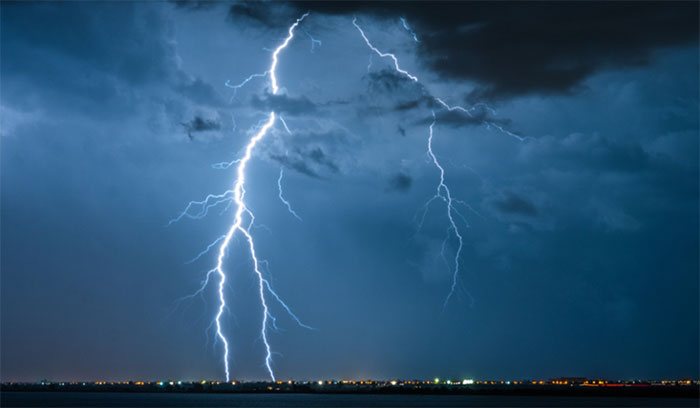Researchers at the Massachusetts Institute of Technology (MIT) have discovered another impact of the lockdown during the Covid-19 pandemic: a reduction in lightning strikes in the atmosphere.
This decrease in lightning strikes coincided with a reduction in the amount of aerosols (tiny particles suspended in the lower atmosphere, including dust, smoke, water, and heavy metal particles).

The reduction in lightning strikes in the atmosphere was noted by scientists during the Covid-19 lockdown – (Photo: SHUTTERSTOCK)
According to scientists, aerosols in the atmosphere contribute to lightning, and human activities such as burning fossil fuels generate aerosols. When human activities decrease, less aerosol is released, leading to a reduction in aerosol concentration in the atmosphere.
Physical meteorologist at MIT, Earle Williams, stated that the research team used three different methods to measure lightning. He said: “All results show the same trend – that lightning activity decreases in relation to reduced aerosol concentrations.”
Some aerosols in the atmosphere can combine with water vapor to form clouds. Williams noted that when clouds contain more aerosol particles, they form smaller droplets and are less likely to coalesce into larger raindrops.
These smaller droplets remain in the cloud, contributing to the formation of small hail known as graupel and even smaller ice crystals.
The collision between graupel and ice crystals generates negatively charged graupel at the bottom of the cloud and positively charged crystals at the top of the cloud. Scientists believe that the significant difference in electric charge between the two parts of the cloud is the cause of lightning.
“If the air is less polluted, clouds will produce larger and warmer raindrops, thereby reducing lightning activity“, Williams said.
As countries closed down and locked down during the pandemic, people released fewer aerosols into the atmosphere. Power plants also reduced their output. People drove less. Similarly, pollution from aviation significantly decreased.
This reduction in pollution may be the primary reason why Williams and his colleagues observed a decrease in lightning strikes, including ground strikes, intra-cloud lightning, and inter-cloud lightning.
During the peak lockdown phases, researchers measured a 19% reduction in the number of lightning strikes compared to the average annual lightning strike rate.
Additionally, the study found that areas with a more significant reduction in aerosol levels also experienced the most substantial decrease in lightning.
Southeast Asia, Europe, and much of Africa witnessed the most significant reductions in both aerosols and lightning in the atmosphere, while the Americas experienced negligible changes.


















































